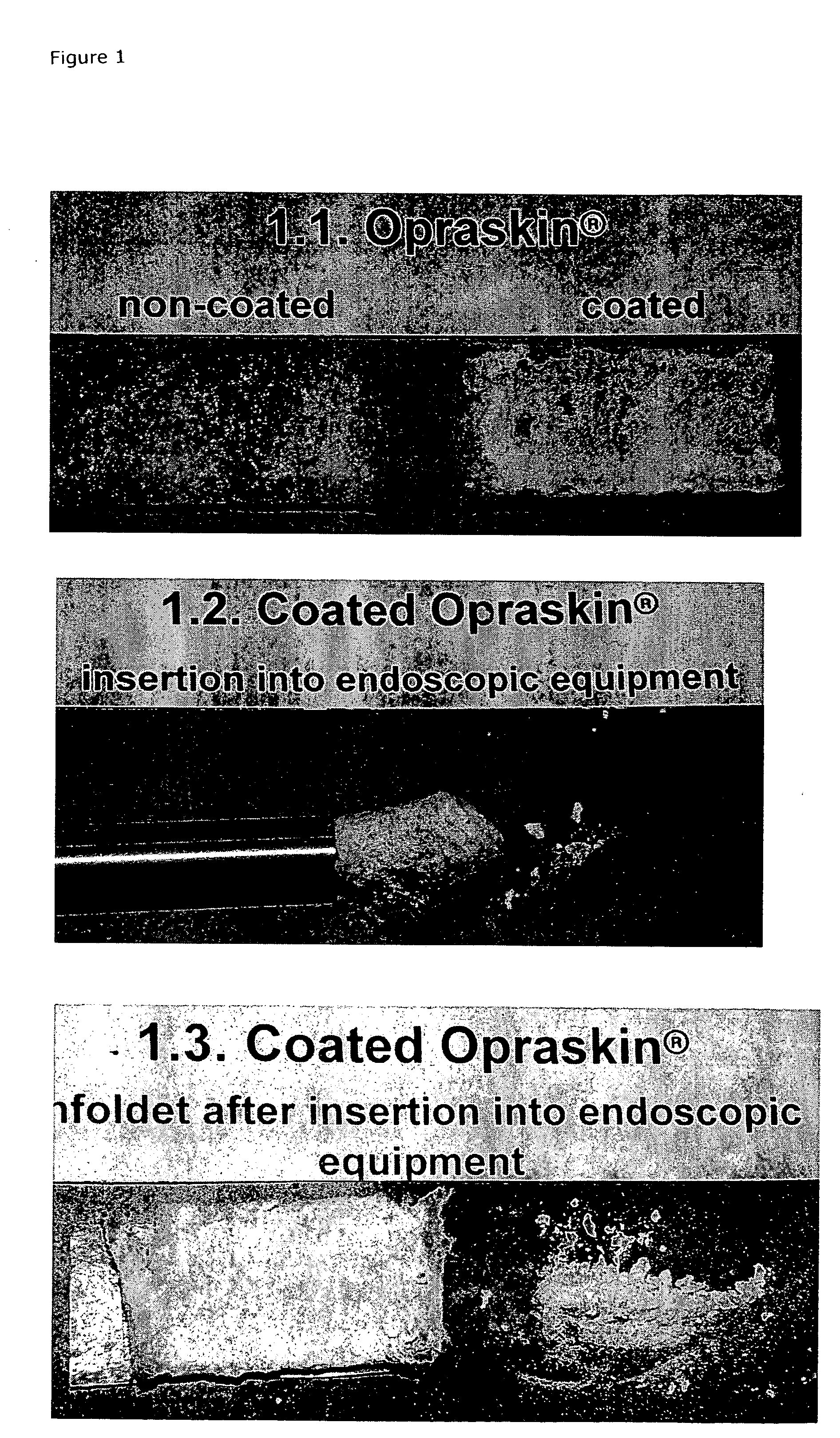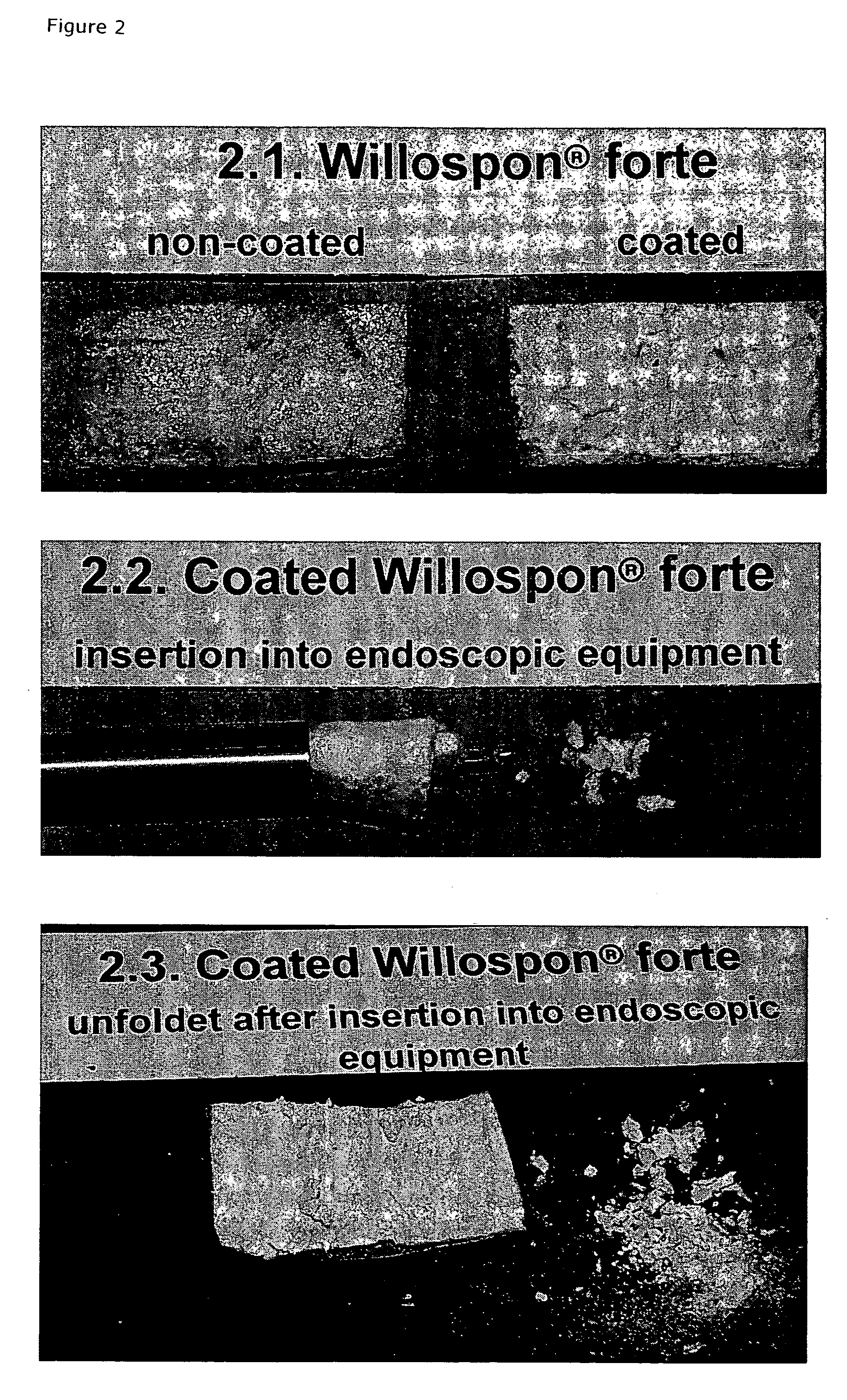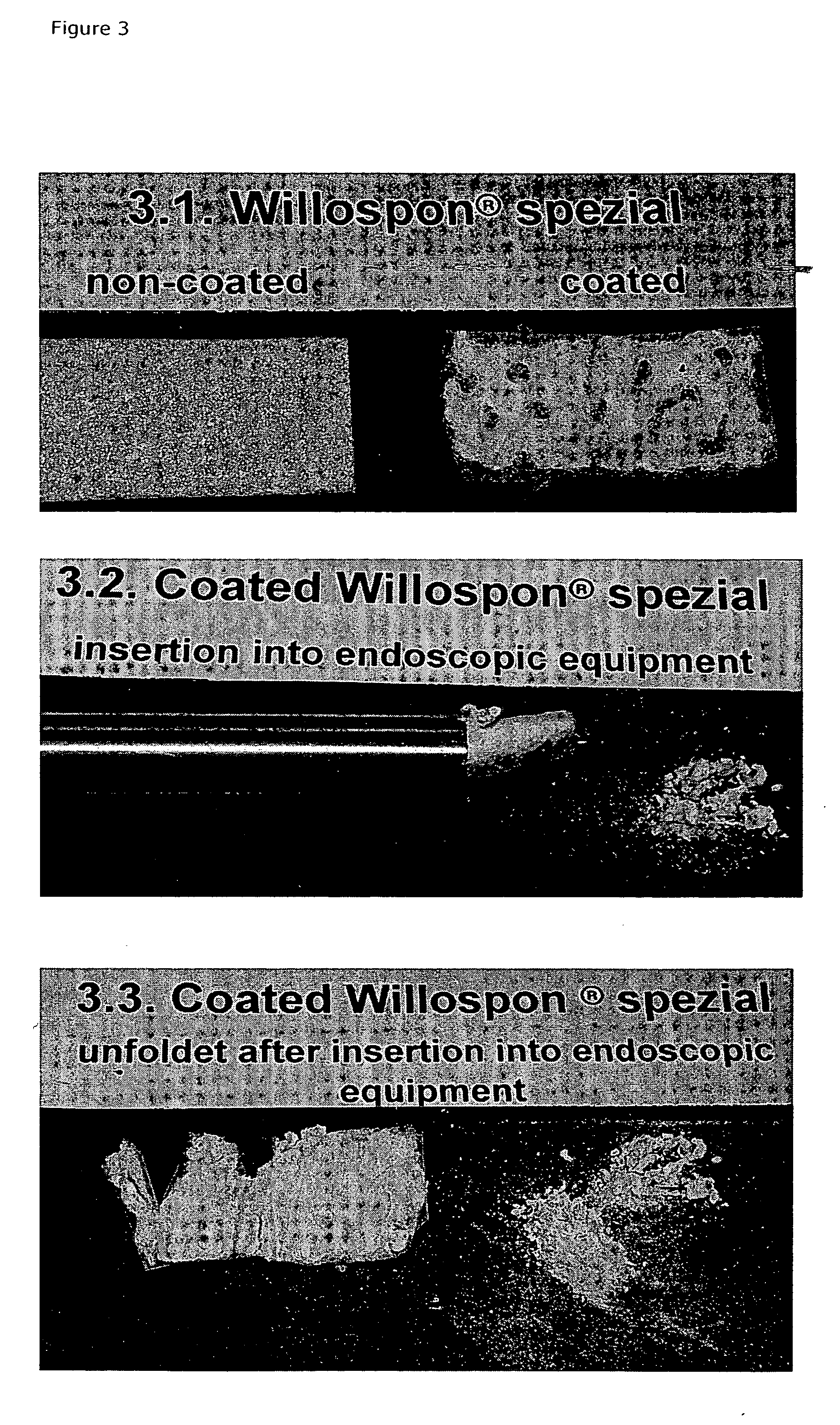Carrier with solid fibrinogen and solid thrombin
a carrier and fibrinogen technology, applied in the field of ready-to-use absorbable compositions, can solve the problems of glue being usually washed away, not practical and cumbersome to work, and washing away,
- Summary
- Abstract
- Description
- Claims
- Application Information
AI Technical Summary
Benefits of technology
Problems solved by technology
Method used
Image
Examples
examples i-iv
below illustrate various procedures for preparation of a coated collagen sponge with different fibrinogen and thrombin raw materials.
Fibrinogen Raw-Materials
% of total substanceComponentFormulation AFormulation BFormulation CHuman fibrinogen36-5242-4736-52Human albumin16-2420-2416-24Total52-7662-7152-76proteinSodium chloride 8-140 8-14tri Sodium citrate2-41-32-4Arginine15-2615-2115-26(hydrochloride)Glycine06-91-2Histidine03-50Sucrose001-2Residual moisture<=22-4<=1.5
Thrombin Raw-Materials
Activity(I.U / mgResidualadditional substancesFormulationsubstancemoistureadditivesHuman thrombin A360-540<=3%Human albumin, sodiumchloride, sodium citrateHuman thrombin B 7-10<=3%Human albumin, sodiumchloride, sodium citrateHuman thrombin C35-60<=3%Human albumin, sodiumchloride, sodium acetate,glycine
example i
In the present example, the suspension contains human fibrinogen formulation B and human thrombin formulation B.
A final suspension volume of 3500 ml was obtained by applying the following quantities and parameters:
Fibrinogen Mixture:
2800 ml ethanol (94% at 2° C.-8° C.) 492.5 g human fibrinogen formulation B 493.5 mg riboflavin
The fibrinogen mixture was stored for 8-16 hours at 2-8° C. while being stirred.
Thrombin Mixture:
100 ml ethanol (100% at −30° C.) 12,27 g human thrombin formulation B
The thrombin mixture was stored for 8-16 hours at −30° C.
Suspension:
157 ml of thrombin mixture is added to the fibrinogen mixture. A 94% ethanol at 2-8° C. was added to fill to the final suspension volume of 3500 ml.
Suspension Characteristics: 1. Ethanol concentration: 94.3% 2. Sedimentation behaviour: a) sedimentation volume 5 minutes after start: 98% of test volume, b) sedimentation volume 24 hours after start: 64% of test volume. 3. Particle size (Folk Ward mean dia...
example ii
In the present example, the suspension contains human fibrinogen formulation C and human thrombin formulation C.
A final suspension volume of 3500 ml was obtained by applying the following quantities and parameters:
Fibrinogen Mixture:
2252 ml ethanol (94% at 2° C.-8° C.) 370.7 g human fibrinogen formulation C 493.5 mg riboflavin
The fibrinogen mixture was stored for 8-16 hours at 2-8° C. while being stirred.
Thrombin Mixture:
188 ml ethanol (100% at −30° C.) 12 vials human thrombin formulation C (10650 I.U. / vial) / 12 ml water for injection
The thrombin mixture was stored for 8-16 hours at −30° C.
Suspension:
164.5 ml of thrombin mixture were added to the fibrinogen mixture. A 94% ethanol at 2-8° C. was added to fill to the final suspension volume of 3500 ml.
Suspension Characteristics: 1. Ethanol concentration: 94.1% 2. Sedimentation behaviour: a) sedimentation volume 5 minutes after start: 94% of test volume, b) sedimentation volume 24 hours after start: 71% of t...
PUM
| Property | Measurement | Unit |
|---|---|---|
| diameter | aaaaa | aaaaa |
| diameter | aaaaa | aaaaa |
| density | aaaaa | aaaaa |
Abstract
Description
Claims
Application Information
 Login to View More
Login to View More - R&D
- Intellectual Property
- Life Sciences
- Materials
- Tech Scout
- Unparalleled Data Quality
- Higher Quality Content
- 60% Fewer Hallucinations
Browse by: Latest US Patents, China's latest patents, Technical Efficacy Thesaurus, Application Domain, Technology Topic, Popular Technical Reports.
© 2025 PatSnap. All rights reserved.Legal|Privacy policy|Modern Slavery Act Transparency Statement|Sitemap|About US| Contact US: help@patsnap.com



